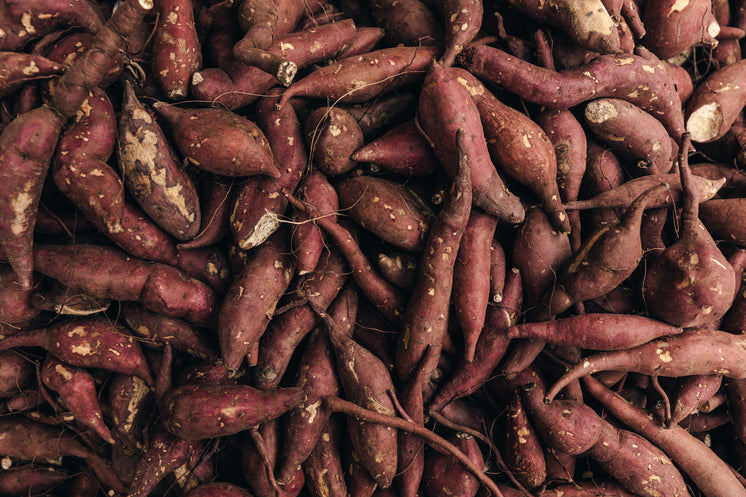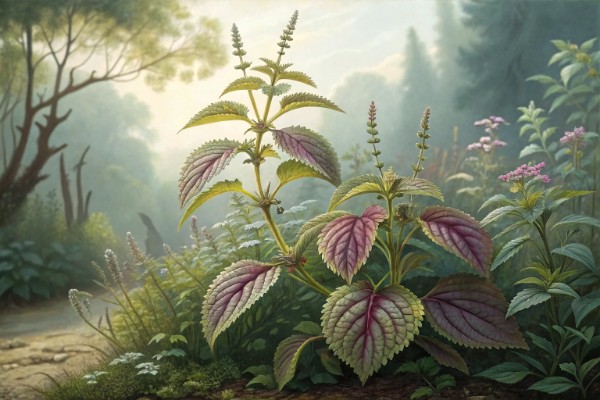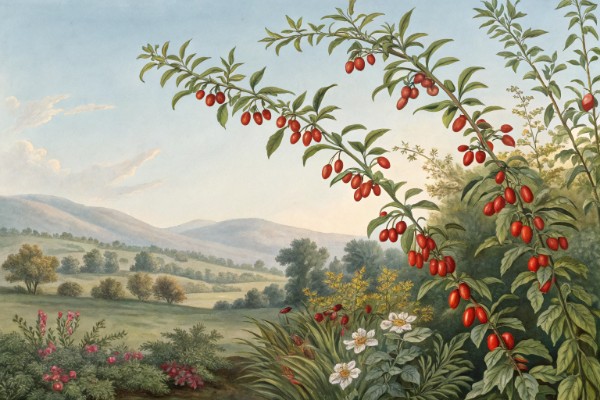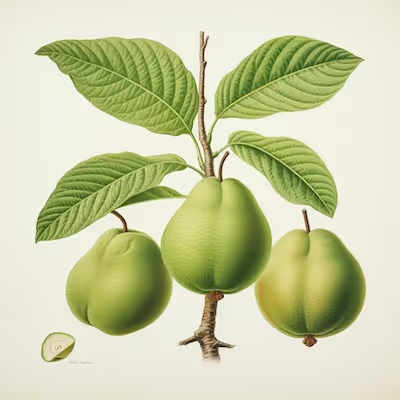Growing Sweet Potatoes: How to Plant, Care, and Harvest

Growing Sweet Potatoes
Growing sweet potatoes starts with choosing slips—those slender shoots sprouting from mature spuds—and tucking them into warm, loose soil. Give these tropical tubers ample sunlight, generous spacing, and consistent moisture, and you'll harvest a bounty of nutrient-packed roots. Read on and uncover how simple, satisfying, and tasty growing sweet potatoes in your own backyard can be.
Growing Sweet Potatoes: Climate, Timing, and Site
Sweet potatoes thrive in heat, so I plant after nighttime lows hold above 60 F (16 C) and soil sits warm above 65 F (18 C).
Count on 90 to 120 frost-free days, and you’ll get heftier roots if your soil reaches the mid 70s F (24 C) early.
“Sweet potatoes are a warm-season crop requiring 90–120 frost-free days and soil temperatures above 65 F (18 C) for planting.” — NC State Extension
I choose a full-sun bed with fast drainage and slightly acidic soil, pH 5.8 to 6.5.
On heavy ground, I build ridges 8 inches high and 12 inches wide (20 by 30 cm) to warm and dry the root zone.
Slips 101: Starting and Sourcing
A slip is a rooted shoot grown from a cured sweet potato, and it’s the standard planting unit.
I order certified, disease-free slips for clean starts, then root extras in water or damp sand for backups.
DIY slips from a cured tuber
- Warm a sound, store-bought or garden tuber to 75–80 F (24–27 C) in bright light for sprouting.
- Set in a tray of moist, sterile media or half-submerge in water, and change water every 2 to 3 days.
- When sprouts reach 6 to 8 inches (15–20 cm), twist off, remove lower leaves, and root in water or media for 7 to 10 days.
Grocery tubers can carry diseases or growth inhibitors, so I treat them as experiments, not my main crop.
Certified slips ship on regional schedules; I match the ship date to soil warmth, not the calendar.
Soil Prep: Feed the Roots, Not the Leaves
Sweet potatoes favor high potassium and moderate phosphorus, with modest nitrogen or you’ll grow a jungle of vines and skinny roots.
I work in 2 to 3 pounds of 5-10-10 per 100 sq ft (1.0–1.5 kg per 10 m²) a week before planting, then band a little extra potassium on sandy beds.
Compost helps structure, but I avoid fresh manure within 4 months of planting to limit scurf and misshapen roots.
A soil thermometer pays for itself the first warm spring that teases and then snaps cold.
Planting Day: Depth, Spacing, and Technique
I plant slips 12 to 18 inches apart (30–45 cm), rows 36 inches (90 cm) apart, in warm afternoon soil.
I set each slip shallow and horizontal, burying 2 to 3 nodes, leaving the top leaves exposed, then water until the ridge settles.
Black plastic or landscape fabric over ridges speeds early growth and blocks weeds.
In windy spots, I trim the largest leaves on day one to cut transplant shock, then let new growth take over.
Watering and Fertility During the Run
I aim for 1 inch (2.5 cm) of water per week through midseason, then taper slightly in the final 2 to 3 weeks for better curing in-ground.
Mulch after the soil warms, not before, so the bed gains heat, then hold moisture with straw or shredded leaves.
If vines look pale, I side-dress lightly with a low-N, high-K fertilizer around week 4 to 6 and water it in.
Excess nitrogen delays bulking and invites foliar diseases, so I feed lean.
Training Vines and Canopy Management
Vines ramble, and mine easily reach 6 to 10 feet (1.8–3 m), so I guide them back toward the ridge to keep energy near the crown.
I gently lift and reposition vines monthly to discourage re-rooting far from the mother plant, which can siphon carbohydrates.
Containers and Small Spaces
In patios or driveways, I use 15 to 25 gallon (57–95 L) fabric grow bags with one slip per bag and a sandy, chunky mix.
I’ve pulled 3 to 5 market-size roots from a 20 gallon (75 L) bag when the mix stayed warm and evenly moist.
Pests and Problems: Clean Culture Pays
The biggest threat in warm regions is sweet potato weevil; in hard-hit zones, I plant certified slips, rotate 3 to 4 years, and destroy residue fast.
Wireworms and white grubs scar roots in fields following sod; I avoid planting right after lawn conversions.
Flea beetles pepper leaves early; floating row cover helps until vines outrun them.
For diseases like scurf, black rot, and Fusarium wilt, sanitation, rotation, and clean slips beat any spray program.
“Use certified plant material and rotate at least 3 years to reduce sweet potato weevil pressure.” — LSU AgCenter
Harvest Timing: Read the Roots, Not the Calendar
Most varieties finish in 95 to 120 days, but soil warmth and daylength can swing that window.
I sample at day 95 by gently digging one plant; if roots run from egg to hand-sized, I set the date.
Harvest before frost, since cold soil blackens skins and wrecks storage.
I loosen with a broadfork or digging fork 12 inches (30 cm) off the ridge and lift gently to save skins.
Curing: Where the Magic Happens
Curing heals skin wounds and converts starches to sugars for better flavor and storage.
I cure at 80 to 85 F (27–29 C) with 85 to 90 percent humidity for 7 to 10 days, then store at 55 to 60 F (13–16 C) in the dark.
“Never refrigerate sweet potatoes; chilling injury occurs below 50 F (10 C).” — North Carolina SweetPotato Commission
After curing, I wait 2 to 3 weeks before eating for peak sweetness.
In a dry climate, I tent crates with perforated plastic to hold humidity without condensation.
Expected Yields
From healthy slips and warm ground, I see 1.5 to 5 pounds (0.7–2.3 kg) per plant, with wider spacing favoring bigger roots.
Sandy loam yields smoother tubers; heavy clay grows clubs unless ridged high and kept airy.
Top Varieties for Growing Sweet Potatoes
- Beauregard: Dependable, 100–110 days, orange flesh, stores well; my benchmark for flavor and yield.
- Covington: Uniform roots, sweet flavor after curing, great for baking; a favorite in the Southeast.
- Bonita: White flesh, rose skin, nutty and less sweet; good in savory dishes.
- Murasaki: White flesh, purple skin, dry texture; fries beautifully.
- Japanese (Satsumaimo) types: Dense and candy-sweet after a long cure; give them full heat.
- Short-season options: Radiance and Vardaman handle cooler summers and container culture.
Buyer’s Guide: Slips, Tools, and Supplies
- Slips: Choose certified, regionally adapted stock; ask for ship dates matched to your last frost and soil temp trends.
- Soil thermometer: A simple probe avoids premature planting and slow starts.
- Black mulch or landscape fabric: Warms soil by several degrees and blocks weeds, saving hours later.
- Drip line: Delivers steady moisture without splashing soil onto stems and leaves.
- Fabric grow bags: Breathable sides keep the root zone oxygenated; 15 to 25 gallon sizes are the sweet spot.
Companions and Rotation
I rotate out of Solanaceae and cucurbits, keeping sweet potatoes on a 3 to 4 year return cycle in each bed.
Low, non-competitive companions like basil at row edges play nice, but I keep the ridge shoulders clear for easy harvest.
Common Mistakes I’ve Made So You Don’t Have To
- Planting cold: Slips sulk below 65 F (18 C) soil and lose a month of momentum.
- Too much nitrogen: Gorgeous vines, skinny roots; feed potassium instead.
- Letting vines root everywhere: Lift and redirect monthly to focus bulking near the crown.
- Skipping curing: Flavor and storage suffer; set up a warm, humid nook before you dig.
- Storing cold: Below 50 F (10 C) turns flesh hard and off-flavored.
My Field Notes
On a July heatwave, I measured 95 F (35 C) air and 88 F (31 C) ridge temps under black fabric, and the vines shifted gears overnight.
The best baked potato I’ve eaten came from a sandy bed where I tapered irrigation two weeks before harvest, then cured ten days in a warm closet with a pan of water.
FAQ: Quick Hits on Growing Sweet Potatoes
Can I plant sweet potatoes from the pantry? Yes, but treat them as trials and watch for disease; certified slips bring better yield and storage.
Are ornamental sweet potato vines edible? The roots are technically edible, though usually fibrous and bland compared to food varieties.
Is mid-summer too late? If you still have 90 to 100 warm days ahead and soil heat, you can pull a respectable crop.
Nutritional and Culinary Angle
One medium baked sweet potato typically delivers over 100 percent of daily vitamin A, a load of fiber, and steady carbs for post-garden dinners.
Long cures amplify sweetness, which is why fries and roasted wedges taste richer by late fall.
Referenced Guidance
- NC State Extension: production calendars, planting temperatures, and cultural practices.
- LSU AgCenter: weevil management, curing and storage recommendations, and rotation guidance.
- University of California ANR and UC IPM: wireworm and soil pest identification and avoidance.
- North Carolina SweetPotato Commission: postharvest handling and storage temperature advisories.
- USDA and land-grant publications: nutrition data and variety performance summaries by region.
Cheatsheet: Sweet Potato Success from Start to Finish
🌱 Choose Slips & Prep
- Use certified slips (rooted cuttings), not seeds.
- Sprout slips at home: Place sweet potatoes half-submerged in water until shoots reach 6 in (15 cm).
- Cut slips and root in water before planting.
🌞 Planting Steps
- Wait for soil temps above 65°F (18°C).
- Space slips 12-18 in (30-45 cm) apart in raised beds or mounds.
- Plant 4 in (10 cm) deep; bury ⅔ of the slip.
- Full sun: At least 6 hours daily.
💧 Water & Care
- Water deeply, 1 in (2.5 cm) per week until vines cover ground.
- Mulch for warmth and moisture retention.
- Fertilize with low-nitrogen (high potassium/phosphorus) formula.
- Watch for wireworm, sweet potato weevil; remove by hand if seen.
🕒 Harvest Tips
- Harvest in 90-120 days or after foliage yellows, before frost.
- Use fork to lift tubers; avoid cuts and bruises.
- Cure 1-2 weeks at 80-85°F (27-29°C), 85-90% humidity for sweetness and storage.
- Store at 55-60°F (13-16°C) up to 8 months.
🧰 Tools and Products You'll Need
- Certified sweet potato slips
- Soil thermometer
- Garden fork
- Mulch (straw or compost)
- Fertilizer (low N, high K/P)
🌿 Health & Self-Sufficiency
High in fiber, vitamin A, and potassium. One plant yields enough for ~7 family servings. Tubers and leaves are edible—maximizing crop value.
⚡ Fast Facts
- U.S. harvests 3B+ lbs/year.
- Sweet potatoes rank among top self-sufficiency crops.
- Warm climates (USDA 8-11) suit best, but short season varieties thrive farther north.
Frequently Asked Questions About Growing Sweet Potatoes
What Kind of Soil Helps Sweet Potatoes Thrive?
Sweet potatoes flourish best in a loose, well-draining soil with plenty of organic matter. Aim for a slightly acidic to neutral pH level of 5.8 to 6.2 and avoid compacted or clay-heavy soil to help roots spread freely.
How Much Sunlight is Needed for Healthy Sweet Potato Growth?
For optimal development, sweet potatoes require at least 6 to 8 hours of direct sunlight per day. Choose a sunny spot in your garden to ensure vigorous vine growth and substantial tuber formation.
When is the Optimal Period to Start Growing Sweet Potatoes?
Begin planting sweet potatoes outdoors once temperatures consistently remain above 60°F (15.5°C), typically about three to four weeks after the last frost date in your region. Warm conditions stimulate rooting and vigorous growth.
How Far Apart Should Sweet Potato Plants Be Spaced?
Space sweet potato slips roughly 12 to 18 inches (30 to 45 cm) apart in rows with approximately 3 to 4 feet (90 to 120 cm) between each row. Proper spacing encourages productive vine expansion and encourages healthy tuber development.
How Often Should Sweet Potatoes Be Watered?
Water sweet potatoes regularly, providing approximately 1 inch (2.5 cm) per week during the growing season. Maintain consistent soil moisture without oversaturating to support steady vine and tuber growth.
When Are Sweet Potatoes Ready for Harvest?
Sweet potatoes are typically ready to harvest 90 to 120 days after planting, depending on the variety. Harvest before frost arrives, as colder temperatures below 50°F (10°C) can damage tubers and reduce storage quality.
Growing sweet potatoes rewards patience and care. You start with slips, give them warmth, loose soil, and steady water, then let time do its thing. Keep weeds out, feed the vines, and watch for pests. When the leaves yellow and the days cool, dig in—literally—for a haul of sweet, earthy roots. The real payoff is flavor that store-bought can’t touch. Growing sweet potatoes isn’t complicated, but it does demand respect for seasons and the slow magic under the soil. If you’re hungry for more homegrown adventure, try your hand at azuki beans or mashua next. The garden, like the kitchen, always has another story to tell.



